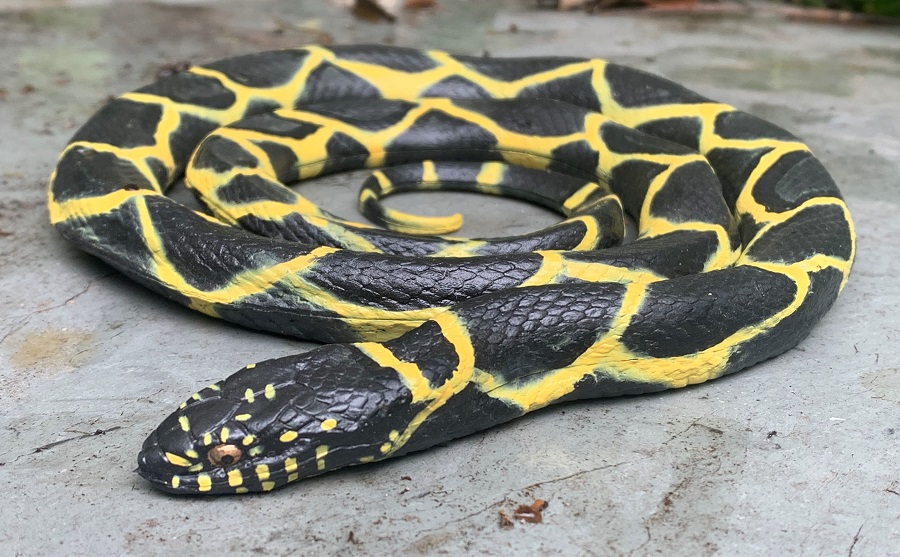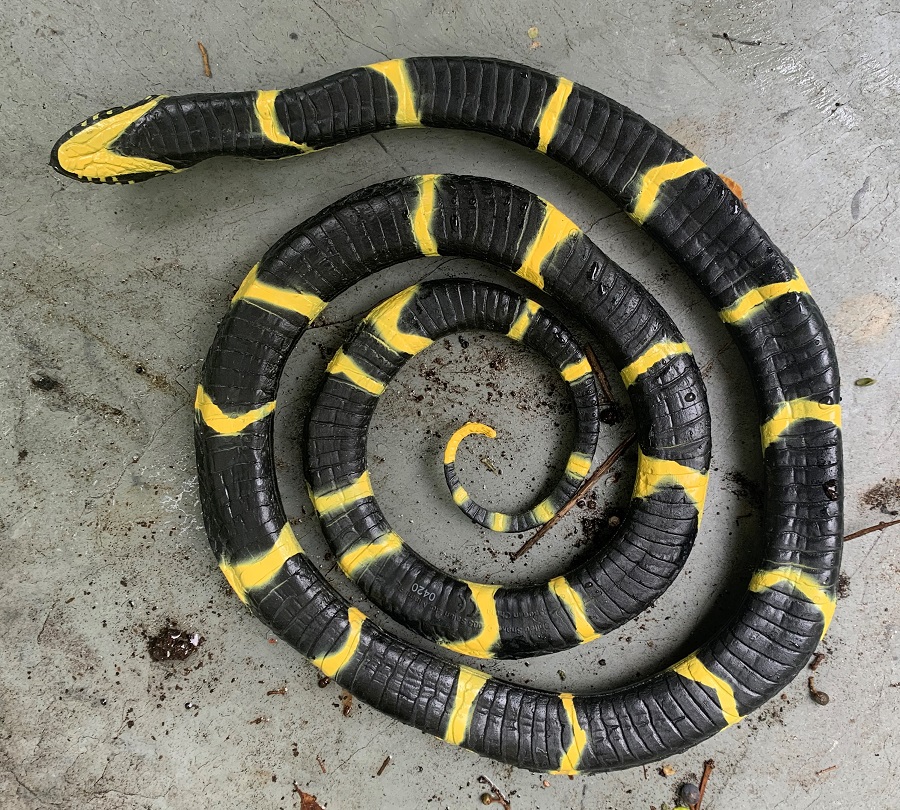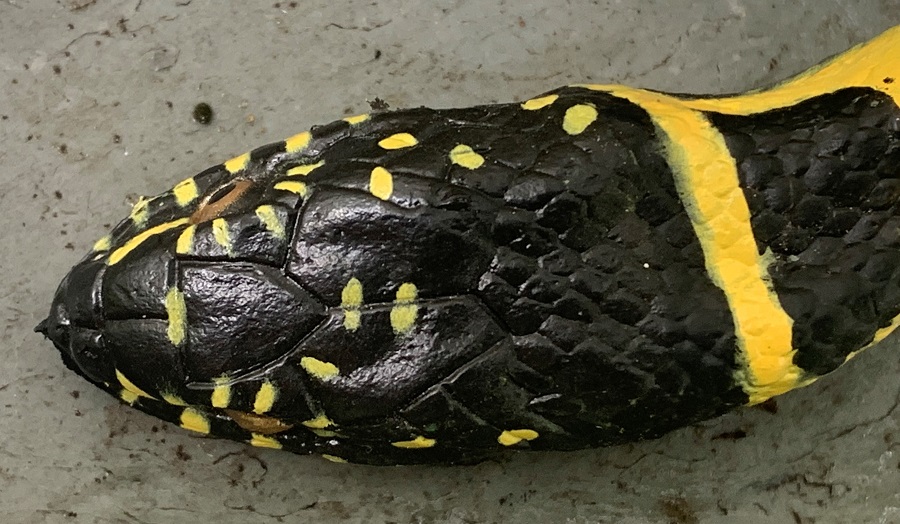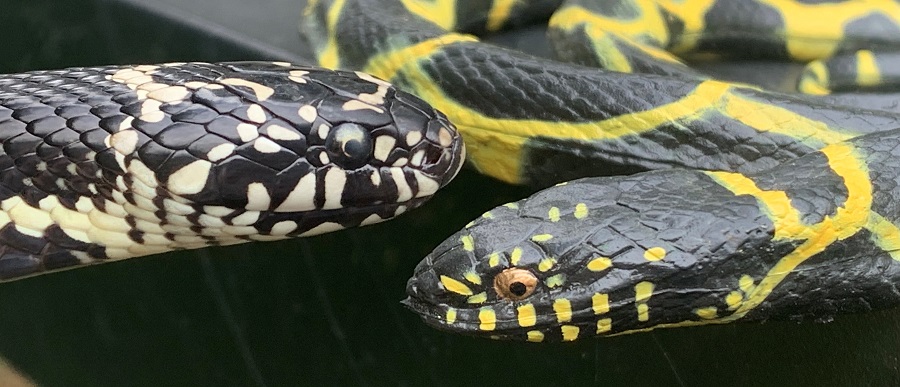Continuing onwards with our look at creepy creatures all through October, I present to you… a snake. Snakes as a group are among the most feared and misunderstood creatures on the planet, two adjectives that often go hand-in-hand. As such, snakes are synonymous with Halloween and an obvious choice for review during spooky season. Of course, there is good reason to fear, or at least respect, many snake species. Some are large enough to constrict, kill, and on occasion even consume humans while many others pack a potent cocktail of venom that can do nightmarish things to your body, if not outright kill you.

Humans seem to have an instinctual fear of snakes, something passed on from our primate ancestors that they inherited from their shrew-like ancestors and so on. This ingrained fear of snakes makes sense in animals, but for humans in much of the more developed portions of the globe, that instinctual fear has become an irrational one, and has resulted in the widespread persecution of all manner of snakes. Consider that there are roughly 3,500 species of snakes and only 600 of them are considered medically significant. In Europe, Canada, and the United States, all the venomous snakes are fairly easy to identify and avoid with a bit of research. Also, many snakes actually benefit humans through their consumption of rodents, a far more serious threat to human health and property. Even venomous snakes benefit humans. In North America, timber rattlesnakes reduce the tick population through their consumption of rodents, each snake removing 2,500 to 4,500 ticks per year. It’s time that we use our human reasoning ability to learn about and overcome our fear of these animals, instead of giving into our primitive fears.

Today’s review is on a snake that you could say benefits humans in more ways than one, as it represents a species that not only eats rodents, but also venomous snakes. This is the Safari chain kingsnake (Lampropeltis getula), part of Safari’s Incredible Creatures line. The chain kingsnake is also known as the eastern kingsnake and ranges from southern New Jersey, south to Florida, and west to the Appalachians.

In it’s default position the Safari chain kingsnake is coiled but when stretched out it measures 36” (90 cm) in length. This makes the toy 1/1 in scale, although the actual species can grow up to 48” (122 cm). Interestingly this figure is apparently molded from an actual snake, like many of the AAA toys I’ve reviewed in the past. Looking on the underside the toy is marked simply as “coiled snake” with a date of 2004. Safari has used this exact snake mold before, for their rough green snake. I don’t know what species was used for the mold, but it definitely wasn’t a rough green snake, which would have keeled instead of the smooth scales we see here. In addition, rough green snakes max out at about 32” (81 cm) which would make this particular snake an enormous specimen if it were that species.

The chain kingsnake is a constrictor, it uses its body to immobilize and kill its prey. In addition to rodents and other snakes the kingsnake also eats various other reptiles, amphibians, birds, and eggs. Chain kingsnakes are immune to venomous snakebites. Kingsnakes get their name from their snake eating tendencies, much like the king cobra.

The Safari chain kingsnake is painted black with a series of yellow crossbars running down its body in a chain-like pattern, hence its name. Yellow spots are also present around the head and face and the eyes are gold with black pupils. Actual chain kingsnake coloration can vary, with many regional variations existing. Generally, they are darker colored with crossbars that can be either yellow or white. Some variations have wide bars, some thin, and some chain kingsnakes can be entirely black.


The sculpt itself is quite nice, as it should be if molded from an actual animal. The various facial scales are present and although occasionally useful in species identification aren’t of use in identifying kingsnakes from most other colubrid snakes. The body is covered in a series of small, smooth scales, and the underside has the wide belly-scales required for snake locomotion. Since it’s from 2004 the mold is starting to show its age, its sort of rough looking in places.

The Safari Ltd. chain kingsnake is a fine, life size toy of a species that you seldom see in the toy animal hobby. It has many potential applications as an educational (or Halloween) prop and fits in well with a collection of life-sized reptiles and other animals. My only complaint about it is that it’s an old, reused mold, and the paint application of the yellow crossbars is sloppy and thickly applied in places. This figure retails for about $12, which I honestly think is a bit steep for a rubber snake. Although not currently available on Safari’s website it can easily be found elsewhere online.

Disclaimer: links to Ebay and Amazon on the AnimalToyBlog are affiliate links, so we make a small commission if you use them. Thanks for supporting us!




Cool!
I love the name of the snake; I assume it was named after the ‘Mistress of the Dark’ 😉
You are correct, making the timing of this review all the more appropriate.